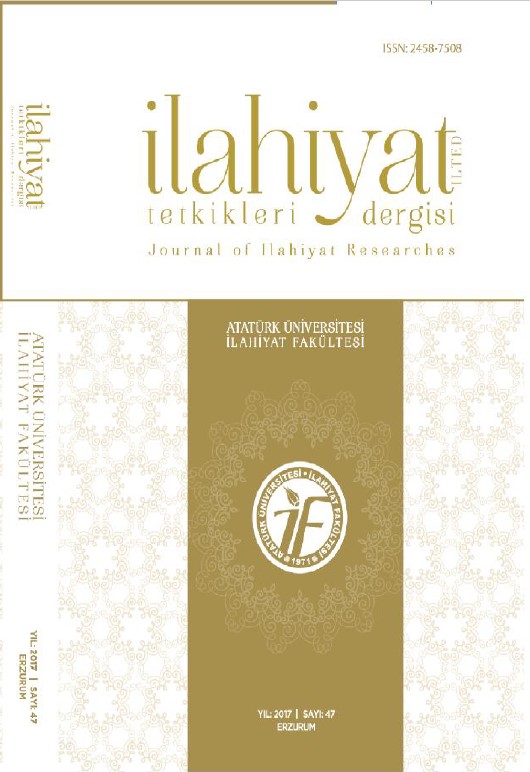Divan-ı Gül Baba'da Hurufîlik Bağlamında Vahdet-i Vücûd Nazariyesi
The Theory of Wahdat at-WudjQd in the Context of Hurufiyya in Güt-Bdbâ's Divân
Author(s): Güldane Gündüzöz, Hatice DAĞLARSubject(s): Cultural history, Islam studies, Philosophy of Religion, Theory of Literature
Published by: Atatürk Üniversitesi İlahiyat Fakültesi
Keywords: Tasawwuf; Wahdat al-Wudfüd; Ibn Arabi; Hurüfiyya; Fadl Allah Hurüfi; Gul-Baba;
Summary/Abstract: Hurüfiyya emerged and developed in the religious-cultural environment of Khorasan. This philosophical thought system has spread in Anatolia, which has a rich ethnic structure and religious heritage. Hurüfism has left deep traces in the field of Ottoman culture and literature. The most prominent effect of this philosophical thought system has been seen in mystical circles. Therefore, this influence continued in the literary texts of the Bektashi path. Hurüfism accepts the holiness of letters and numbers. In this direction, it has made the principles of belief clear. This style essentially embodies the idea of Wahdat al- Wudjud. Just as human beings are at the center of the Wahdat al-Wudfud theory, there is also human in the centre of Hurüfiyya. The purpose of this thought is to bring the individual closer to the level of alInsan al-Kamil. Hurüfiyya was systematized by Fadl Allah Hurüfi. This system continued its influence in the Ottoman Empire until the 17th century. Except for those who went to extremes in defending this theory, the state did not seriously interfere with the Sufis who defended this idea. Divan of Bektashi Gul- Baba was the subject of this article in this context, because the thought of Hurüfiyya is very evident in the works of a Bektashi dervish Gul-Baba.
Journal: İlahiyat Tetkikleri Dergisi
- Issue Year: 2020
- Issue No: 54
- Page Range: 355-378
- Page Count: 24
- Language: Turkish

